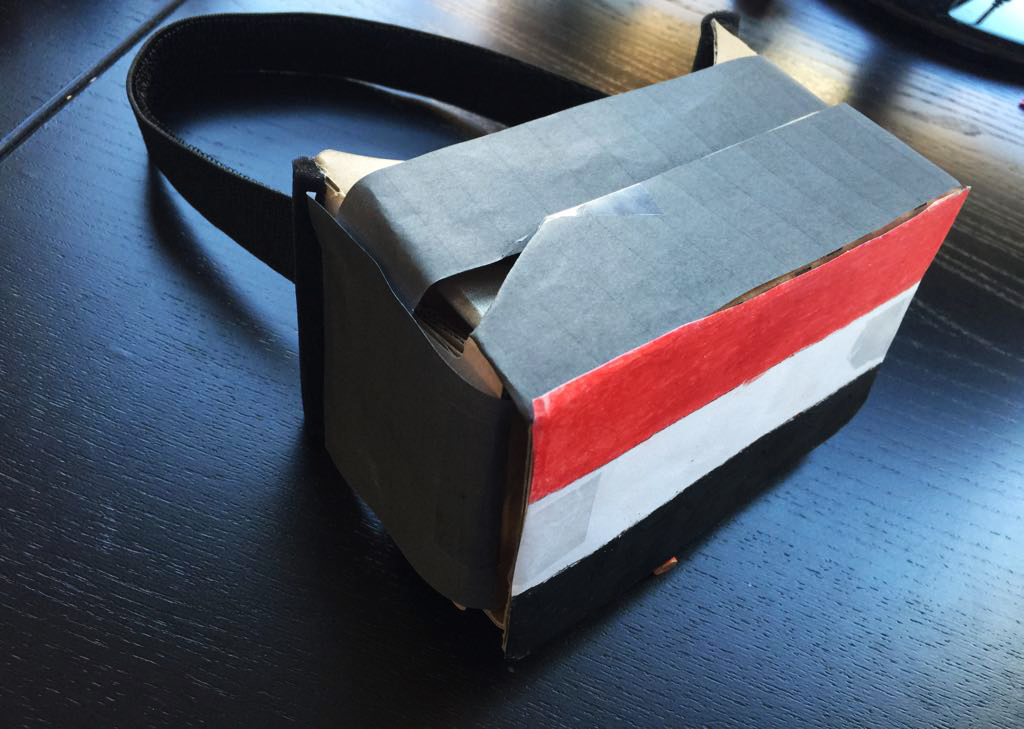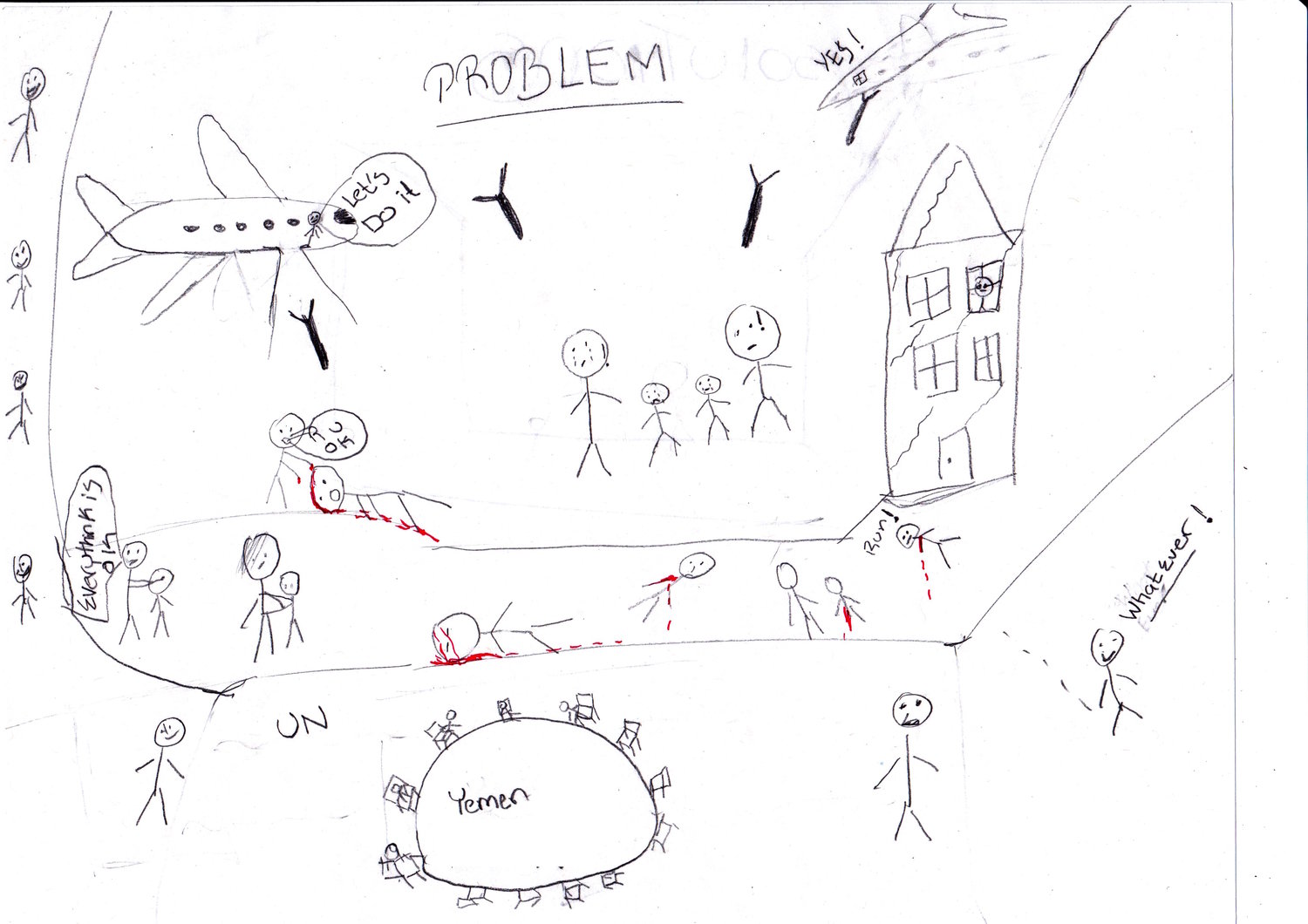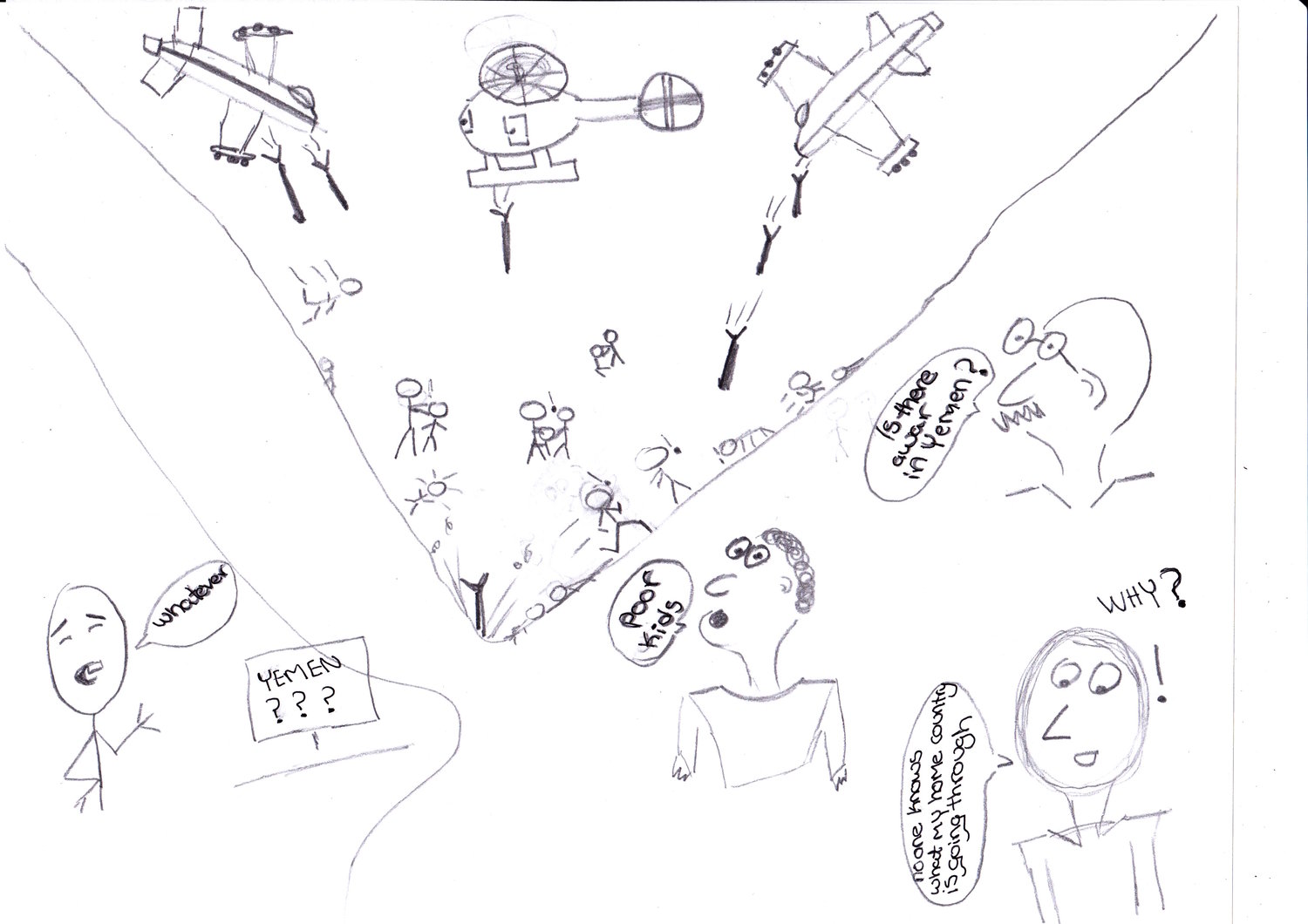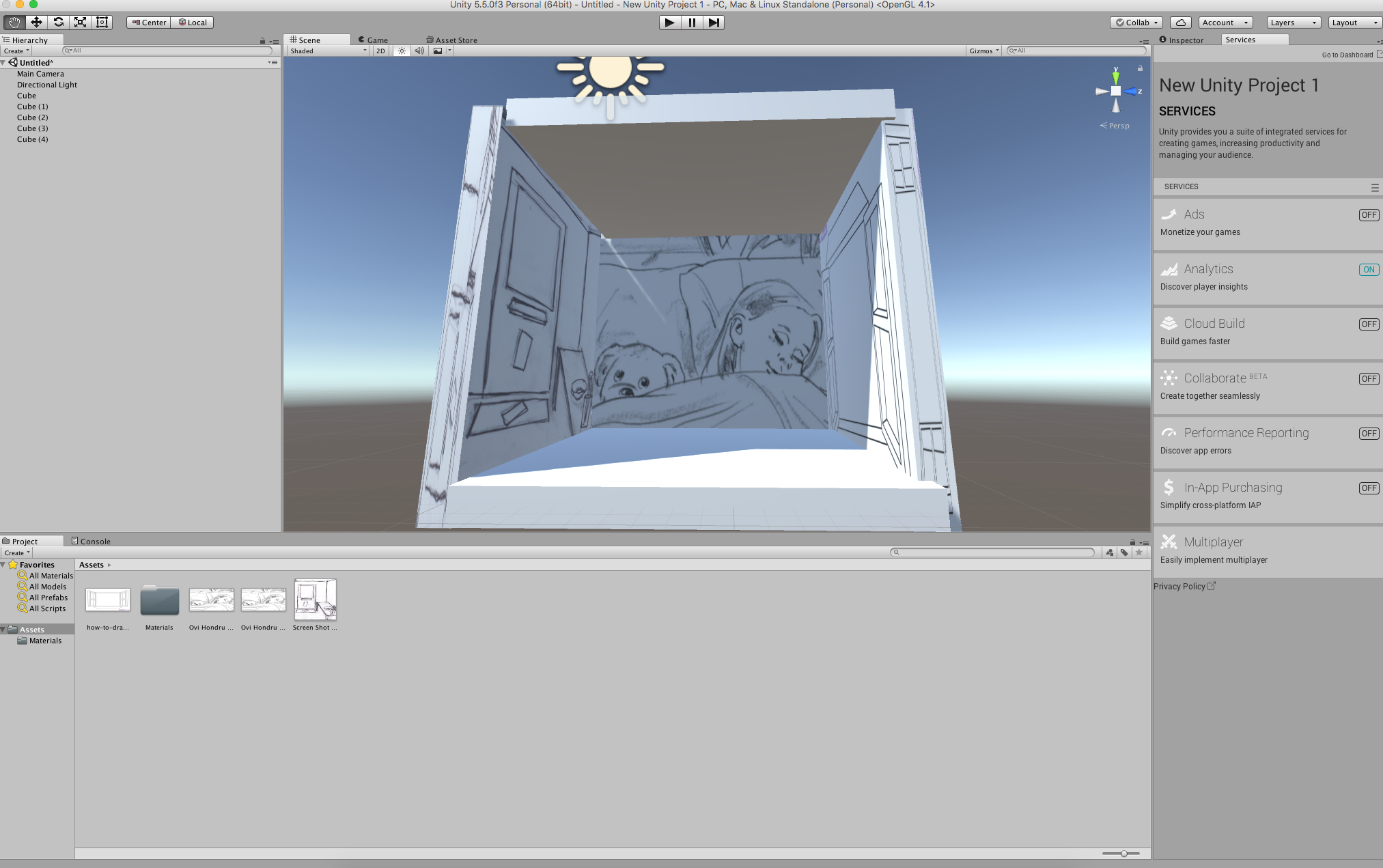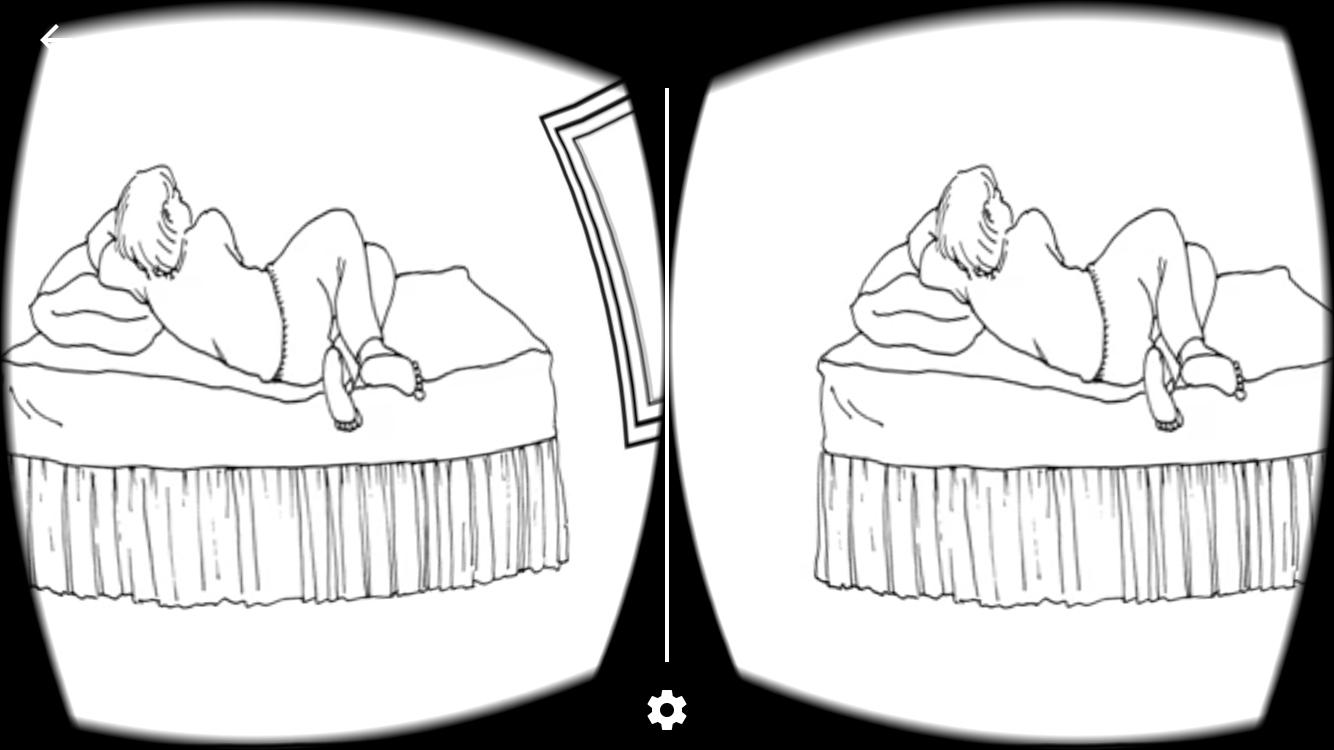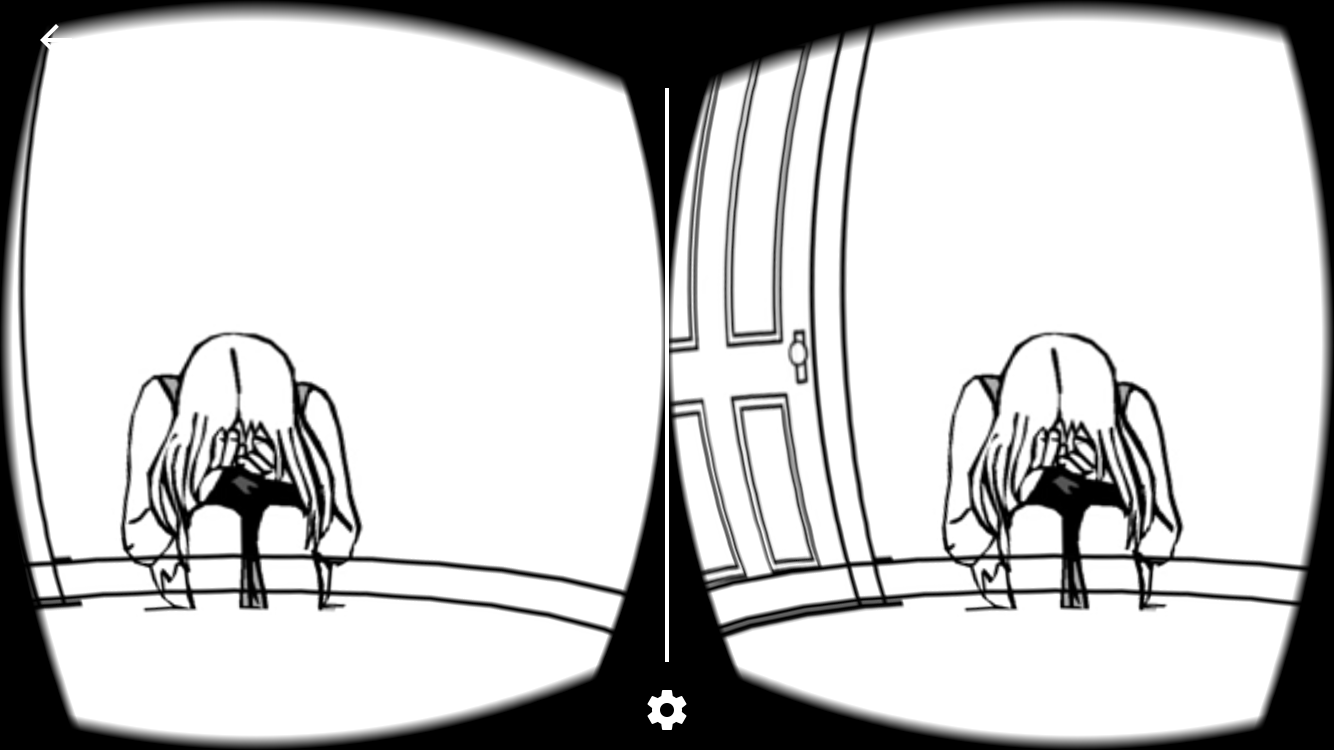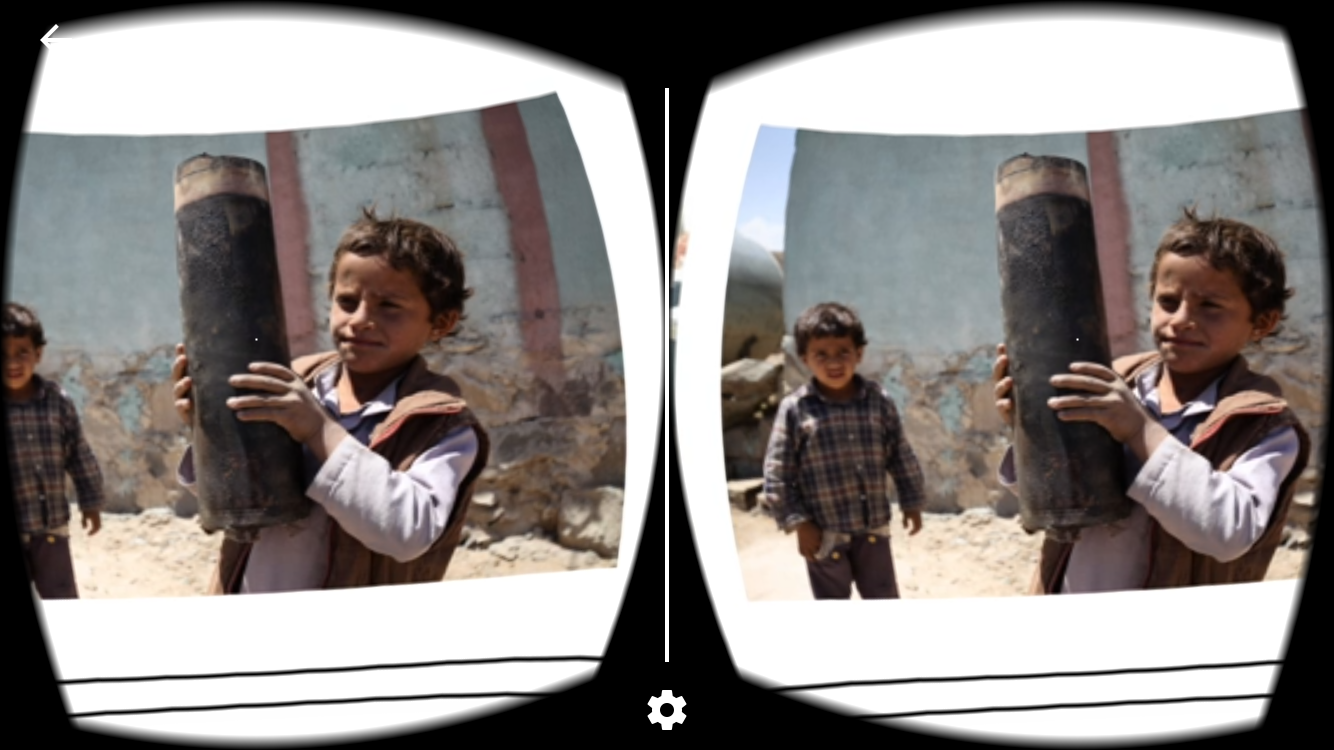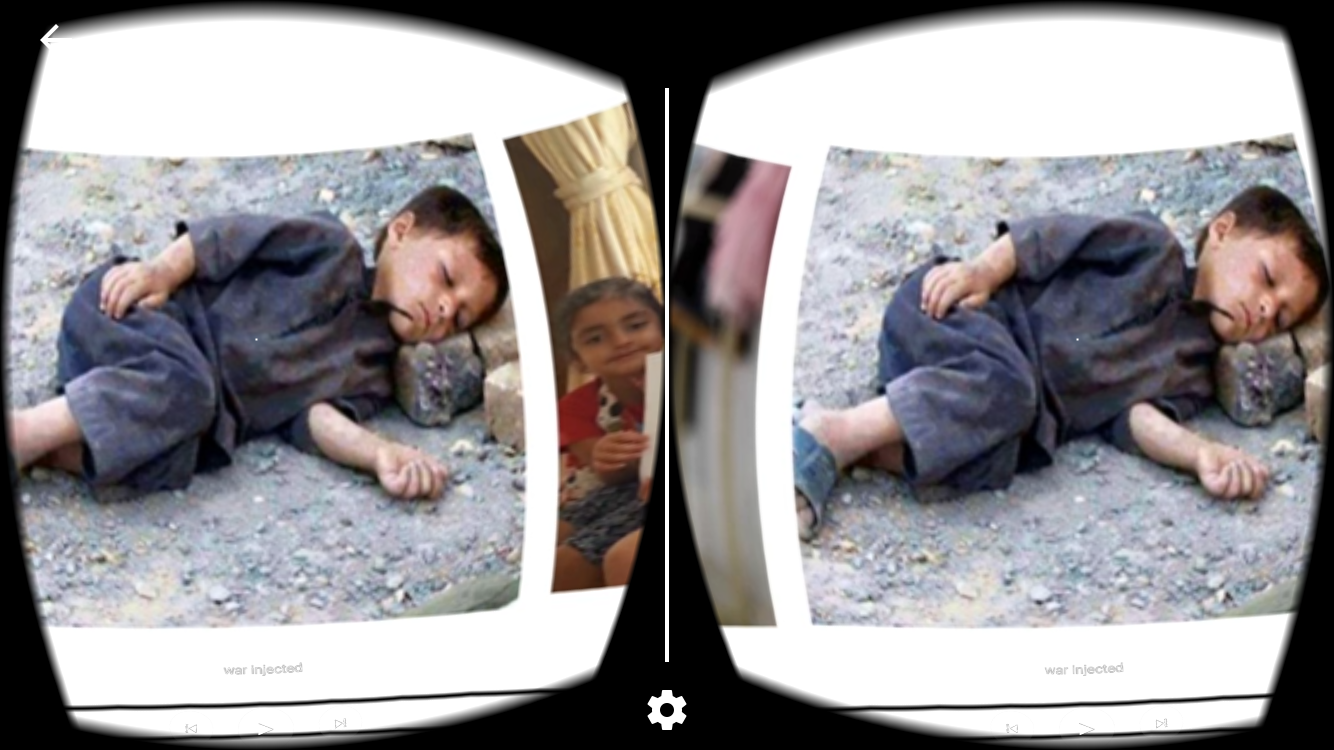Research through design-THE UNKNOWN WAR
"CAn
MY ROLE
This was an individual project
I LEARNED HOW TO
- Use research through design and understand the role of it.
Engage critically with theories and concepts related to the analysis, design
, development, and implementation of interactive media experiences.Develop my individual skills as a designer by conducting a Research-through-Design (RtD) project.
The UNknown WAR
ABOUT
In the fall quarter 2016, I conducted a research project through design practices, where I researched a topic through the creation of an interactive object . The main goal was to create a provocative object through the design process. The topic I chose was "war" and how it affects children.The Technical systems I intend to use was virtual reality platform.
TOOLS
Adobe Illustrator, Adobe Photoshop, Adobe After Effects, Unity, 360 tools, GOPro player and Adobe Premier.
why this topic
Yemen is my home country and the place where I grew up in. Over the past 19 months, I saw my home country being destroyed and I am unable to help them in any way. Therefore, I thought maybe I could use research through design to show the world what's happening and to understand the problem.
THE PROBLEM
Over the last 19 months, Saudi Arabia has been conducting relentless and indiscriminate bombing campaigns against Yemen. They are
THE GOAL
After the stakeholder interviews, I identified 3 main goals and the measure of success for this project. I need to show an awareness about this problem since it is not presented in the media. Creating an empathy that will inspire people to care about others is one of my main goals. Also, I need to follow the research through the design process to understand the problem and get people to care!
TECHNOLOGY/SOLUTION
The technology that will be used in this project is a virtual reality platform. I am interested in this platform as I think it will be our future. VR is not like any platform and users will actually feel it using their whole body. The goal of this project is to develop a virtual reality platform to convey news and to tell a story about the other part of the world.This project will examine how we could use technology to tell a story and inspire people to care using a virtual reality platform. By doing this project, people will be informed about such situations and will be a voice for poor Yemeni people.
The process
This process below documents my work on this topic throughout the quarter. It will show the design artifact from my initial conception through the final product ( prototype and whole vision).
DEFINING THE PROBLEM
To start my research, I sketched parts of the war in order to get started. Although these are just stick figures, they actually help in showing the problems in Yemen. It is a big situation to explore and have many issues. This design method helped me quickly get ideas out and work through my problem and develop a creative solution to the problem.
My next step was to develop a research question and my methods I will utilize in my research. Coming up with a research question is complicated. The topic is one of the real world problems and many designers have been working on this problem.
MY INITIAL PROBLEM STATEMENT
“Many people don’t know or don't understand the war's effects. War impacts people in and outside the war zone”
Technical systems I intend to use
As mentioned above, I will be using virtual reality to explore the problem. Also the software that will be used is "Unity" as it is one of the best VR software and has a lot of features
METHOD(S) OF EXPLORATION
The Methods of exploration I planned to use in this research are primary and secondary research. For the primary research I planned to have interviews, surveys and Scenarios. On the other hand, in the secondary research I planned to search online and to see what's out there and what's already been done.
inspirations
Moving forward, I started looking for inspirations and what already has been done in this problem. I found sources about war but none of them were about the war in my home country. This motivates me to keep working on this as I will be the first who creates something for war in Yemen.
SOME OF THE PROJECTS I LOOKED AT:
"Your phone is now a refugee’s phone"
This project film, designed to watch on a mobile phone that will help the viewer to experience with immediacy the confusion and fear facing refugees making a perilous journey by boat.
If you had to flee your country, what's the one piece of technology you would take with you? This striking film, designed to watch on a mobile phone, helps the viewer to experience with immediacy the confusion and fear facing refugees making a perilous journey by boat.
“Clouds Over Sidra”
This project “Clouds Over Sidra” is a virtual reality experience that user can watch on their smartphone. And it is having an emotional impact on viewers. Now people can travel to a Syrian refugee camp without leaving their home.
"Now you can travel to a Syrian refugee camp without leaving home. "Clouds Over Sidra" is a virtual reality experience that you can watch on your smartphone. And it's already having an emotional impact on viewers."
I found more projects that talks about war, but most of them about Syria. The above projects were small projects and did not require a lot of time. I thought maybe I should look for bigger projects that inspire people. After a long research, I found my three best projects, all were from different disciplines. One from computer science, one from design and one from art. I found these projects effective and have an impact. On the right side you could see my inspirations as all are having the same topic.
PROJECTS TRAILER/description
The first inspiring project is called Project Syria: An Immersive Journalism Experience By Nonny de la Peña. Nonny has been working as a journalist most of her life. She thought about What if she could present a story that people would remember with their entire body and not just with their minds. One day She got involved with virtual reality that she started seeing these really intense, authentic reactions from people that really blew her mind. One of her projects is called "Project Syria" by which she created a VR that Brings the Daily Trauma of the Syrian War to Life. The audio she used was all real, which really creates a sense of presence! This project is interesting as it presents the problem in a different way. Users will experience Syrian war without being there. I feel this project is really inspiring and presented the Syrian war very well.
The second inspiring project is called "Liyla and the Shadows of War" by Rasheed Abueideh. This is a Game based on actual events that tells a story of little girl lives in Gaza during the war in 2014. The author explains the reason for this game is "When the war started in Gaza and I saw the images of the killed kids in their parents' hands, I was shocked, I had a weird feeling, it is a combination of sadness, fear, empathy and anger, All what I was thinking of is "what if this happened to me. I have chosen to share those feelings in a game to deliver a message of how we are living as Palestinians under this situation. It is Not Just a Game, It is a case and call for help." (Abueideh) He created the game showing how war treats people in Palestine. Where time is running against you, your family is in danger and there is nowhere to hide or to do but to get them out of the home through a hero journey to a safer place.
The third project is called Artificial Killing Machine and it is an autonomous interactive mechanical installation. It Visualize the U.S. Military drone strikes in an autonomous mechanical installation that uses public databases on U.S. Military drone strikes to visualize deaths of individuals. It presents real data of people being killed using drones. Whenever drone strikes happen, the installation will print the estimated deaths, country/place and reason. As the installation will print out in thermal paper that cascades onto the floor. Viewers are encouraged to sit underneath all the cap guns and wait. Talk about creepy and suspenseful and a tiny reflection of the everyday fears that people who live under drone-filled skies.
PRIMARY RESEARCH
I feel this was the most important part in my project. It was carried out to answer specific issues and questions about war. This research involved surveys and interviews with individuals. I started my research with interviewing my family members who had experienced war. The first interviewee was my older brother as he lived in
My second interviewee was my cousin, who is a college student in Seattle. He went back home to visit his family member and he ended up in a war. My cousin had several bad experiences of war. He shared some of his experience and what was happening. He gave me some stories that my brother did not experience. Here are some quotes:
"You feel hopeless in war and you see the world watching you"
"Our Children were particularly impacted by the war through disruption to home life and to schooling"
All the interviewees I had were in Seattle who had experienced war for less than 2 months. These were not that helpful, so I thought maybe I should interview more people. The problem was there is no Yemeni community here in Seattle. I did not want to interview people from other countries since the media is representing that. I had one option "Phone interviews". I scheduled two phone interviews with my yemeni friends who are living in war. The interviews took more than 40 minutes and it was intense. I got a lot of information I did not know before even after interviewing my family members.
INTERVIEW ANALYSIS
Through this analysis, I have seen recurring themes and issues that have been coming up in the interviews.
- The first day of war had an impact in individuals and they still remember it
- Children were the most effected by war
- You feel hopeless and you can't react and You see the whole world are watching
- You can't sleep at night and you have to wake up morning to continue your life like nothing is happening
Secondary RESEARCH
After the interviews, my research question has changed. I wanted to focus more on children and what they felt. Here is my new research question:
"How we could use technology to tell a story and inspire people to care about children in war using a Virtual reality platform?"
I started my secondary research focusing on these issues. This research uses information previously researched for other purposes and it is publicly available. I did find many resources online about children in war and how they are effected. I found many Yemeni children sharing their experience. I was amazed how these kids are able to express their feelings to the world without any fear.
SECONDARY RESEARCH ANALYSIS
I have seen common themes in this research like:
- First day of war and how they were frightened
- They did not know what was happening and why they are attacked
Design Ideation
After all of the research I have completed
- I need to focus on children and the first day of war
- I need to think about how to create empathy and establish why should people care
I started thinking about my design by mapping out all of my ideas and what can be done related to this issue. I want to create empathy for children in a war zone using virtual reality. So my question was "HOW?"
limitations
There are some limitations to my design ideas . The limitation is footage; there is only one 360-degree video of the war (1:10 Sec) and I still need to edit the video. While I know people who are living in the war that are able to record videos, they are not a 360-degree videos, so all I currently have are 2d videos. The 360-degree camera is not available back home, and it is expensive.
Alternative ideas
I started thinking about sound, and I realized that I could potentially use it to inspire people, especially with the children's voices. Another idea was that I could recreate a scene based on the first day of the war. So, my conclusion was that I could use a real scene and create a 3d model of the first day of war that includes the sound of children.
storyboards
Moving forward with my ideas, I started creating storyboards for the experience of the first day of war. Below are my initial storyboards.
These storyboards did not work well with my project. I am creating a 360 degree environment that will show the entire experience. Because of the storyboards above, users may miss some scenes. This 2D surface does not show what the user could see if they rotated the scene to see different aspects of the narrative positioned differently.
360 storyboards
My other way of story-boarding for VR is 360 storyboards. I argue that this is a better way of story-boarding, as it will present the whole story. Using the above storyboard, I realized it may miss some scenes as it is unknown what the position of the user would be. I started these storyboards by using a 360 sketch, where I drew all the scenes that I wanted.
I came up with this idea, which is that maybe I could use Unity to create the storyboards, and this was not a good idea since I needed a video to export and present it. In Unity, I could create the experience, but I
Moving forward, I thought I could create something interactive with these storyboards. I sketched the entire 360 degree scene. What I mean by 360 is the left, right, top and bottom of each scene. The video on the right side is a prototype of the storyboard I wanted to create. This was not easy to do, since I had to stitch all of the images to make the 360 environment. Then I uploaded it to YouTube. After conducting research, I found I had to download a software to upload the video. Once I uploaded, It did not work and I had to test it in "GoPro player". I did this five times and I still did not succeed. I did not understand the problem. After a while I realized YouTube needed at least one hour to recognize that the video is in 360. This was a lesson to me to be patient , as I did waste time uploading instead of waiting.
Final 360 Storyboards
Once I was done with the storyboard prototype, I started creating the whole scene and the vision of the expected experiences.
Note: The video contains some real footage of explosions that was sent by one of my interviewees.
youtube 360 can be open only in google chrome!
Some screenshots from the google cardboard when running the storyboards and testing it:
Technical process
I started this process by watching many tutorials about VR and how to create a 360 video. Starting this was not easy at all, since I did not have any knowledge about this.
The first software I looked at is Unity. At first, I had no idea how to use it or how it works. I followed some you-tubers to help me get started. After learning some of the Unity skills, I I became able to control my scene,
This software was downloaded at the beginning of my process, I used GoPro to test my video in my computer before exporting it. This was really helpful, and it did save a lot of my time.
I used
Interactive Prototype
This is my simple interaction prototype that shows the environment of war and its real scene. I included a sound that shows war effects, recorded by my family members.
Testing
I designed
Conclusion
After doing this research, I came to a conclusion. War is a huge and complicated problem that people try to ignore. If people are not impact by war, they would likely ignore it. Designers should think more about how to keep the user engaged and actively participating in alleviating such situations. I felt it is really hard to create empathy with children in war, as these children are living far away.
What I learned from this Project
I learned several things while doing this project.
- This is a hard topic for me personally, as It has a personal impact. However, I need to be strong and speak up for poor people.
- Researching this problem broadened my view about the political issues in the Middle East, where I previously did not personally have any interest. The research showed me how people think about trade over the humanity
- Presenting this issue to western culture is not an easy task. People in the USA often think about this in a narrow way, and they do not really know about such situations. There are some people who do not even know where Yemen is, and this makes it harder for me as a designer to present this issue. It is not only about creating an awareness about war, but also showing them where it came from
- This project changed my thinking about design. Right now, I believe design is not only about making things pretty, but also creating things that would change the world to become a better one
- Coming from a different culture and seeing how people think changed my perspective about war culture
- I realized that people who understood this issue were international and people from different ethnic backgrounds
Citations
- http://www.liyla.org/
- http://www.latimes.com/world/middleeast/la-fg-yemen-us-20161010-snap-story.html
- https://www.youtube.com/watch?v=m1BLsySgsHM
- https://www.youtube.com/watch?v=MMRhWJPv38s
- http://www.immersivejournalism.com/project-syria-premieres-at-the-world-economic-forum/
- http://www.polygonfuture.com/artificial-killing-machine
- https://www.facebook.com/ajplusenglish/videos/828953510579491/?hc_ref=PAGES_TIMELINE
- https://www.youtube.com/watch?v=6n7Y_KDB174
- https://www.nytimes.com/video/world/middleeast/100000004736495/in-the-rubble-of-an-airstrike-in-yemen.html
- http://www.un.org/apps/news/story.asp?NewsID=52985#.WE9wRaIrJE4
- http://en.alalam.ir/news/1734652
- Alsunidar, Majed. "The War in Yemen." Personal interview.
- AL-Shaba, Ibrahim."The War in Yemen."Personal interview.
- ALahamer, Mona." The War in Yemen." Personal interview.
- Alnono, Amal."The War in Yemen." Personal interview.
- https://alistairreignblog.com/2016/04/15/yemen-who-is-protecting-the-war-orphans-by-alistair-reign-for-your-ability-org/
- The Video in storyboard of the explosion was spent from my Yemeni friend Nasim Alsunidar who was one of the interviewee
Alsunodar, Nasim Hussan. "The War in Yemen." Telephone interview.
